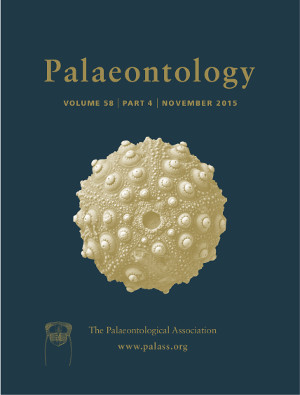Reg. Charity No. 1168330

Characterized by atypical frontalmost appendages, leanchoiliids are early arthropods whose phylogenetic placement has been much debated. Morphological interpretations have differed, some of which concern critical characters such as the number of eyes and head appendages, but methodological approaches also have diverged. Here, we describe a new leanchoiliid, Yawunik kootenayi gen. et sp. nov., based on 42 specimens from the newly discovered Marble Canyon locality of the Burgess Shale (Kootenay National Park, British Columbia; middle Cambrian). This new morphotype demonstrates the presence of a four‐segmented head in leanchoiliids, along with two small antero‐median eyes in addition to lateral eyes. Yawunik is characterized by a 12‐segmented trunk and a carinate, lanceolate telson adorned with minute spines. The ‘great appendages’ of the animal bear teeth on their two distal rami, which would have enhanced their ability to grasp prey. Attitudes of specimens, resulting from burial at multiple aspects of bedding, suggest the ‘great appendages’ were flexible and capable of antero‐posterior rotation. We also discuss the nature of intersegmental tissues and filaments present within the ‘great appendages’. Our phylogenetic analyses extend the monophyly of leanchoiliids to include Haikoucaris and Yohoia in a new clade, the Cheiromorpha nom. nov. (within Heptopodomera nom. nov.). Other nodes are poorly resolved unless implied weights are used, and in this case, the topology is critically sensitive to the coding prerogative of inapplicable states (NAs). Both the traditional ‘Arachnomorpha’ hypothesis (NAs as additional states) and the more recently favoured ‘Artiopoda + Crustacea’ (NAs as uncertainties) were obtained using the same data set and outgroup. This result stresses, first, the historical importance of polarization over data content in scenarios of early arthropod evolution, and second, a pressing need to investigate the impacts of coding inapplicables, especially given the inflating effect of implied weights.